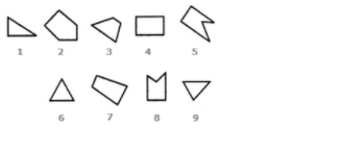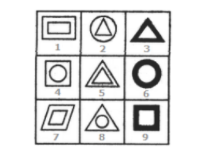You have given three different tasks to three groups in your classroom
Group 1: Compare the given figures and find out which one occupies more area.
Group 2: Calculate the perimeter of the given shapes using a ruler.
Group 3: Find out how many steps you can take along the sides of the classroom walls by walking heel to toe.
On what basis have these groups most likely been created?
Based on student learning styles.
Based on student learning levels.
Based on student interest in Maths
Based on students’ cognitive ability.
The correct Answer is:B
To determine the basis on which the three groups have been created, we need to analyze the tasks assigned to each group and their complexity.
1. Identify the Tasks:
- Group 1: Compare figures to find which occupies more area.
- Group 2: Calculate the perimeter of given shapes using a ruler.
- Group 3: Count how many steps can be taken along the classroom walls by walking heel to toe.
2. Analyze the Complexity of Each Task:
- Group 1: This task requires understanding the concept of area, which involves calculations and comparisons. This is generally considered a higher-level cognitive task.
- Group 2: This task involves measuring the perimeter, which is a straightforward calculation but still requires some understanding of geometry.
- Group 3: This task is more physical and involves counting steps, which is simpler and more engaging for younger or less advanced students.
3. Determine the Learning Levels:
- The tasks assigned to each group reflect different levels of understanding and skills in mathematics.
- Group 3's task is the simplest and likely suited for students who are at a basic level of understanding.
- Group 2’s task requires more mathematical skill and understanding of shapes, making it suitable for intermediate learners.
- Group 1’s task is the most complex, requiring advanced understanding of area and comparison, thus suited for more advanced learners.
4. Conclusion:
- The groups have been created based on student learning levels. Each group is assigned a task that corresponds to their mathematical understanding and skills.
Final Answer:
The groups have most likely been created based on student learning levels.
---
- Group 1: Compare figures to find which occupies more area.
- Group 2: Calculate the perimeter of given shapes using a ruler.
- Group 3: Count how many steps can be taken along the classroom walls by walking heel to toe.
- Group 1: This task requires understanding the concept of area, which involves calculations and comparisons. This is generally considered a higher-level cognitive task.
- Group 2: This task involves measuring the perimeter, which is a straightforward calculation but still requires some understanding of geometry.
- Group 3: This task is more physical and involves counting steps, which is simpler and more engaging for younger or less advanced students.
- The tasks assigned to each group reflect different levels of understanding and skills in mathematics.
- Group 3's task is the simplest and likely suited for students who are at a basic level of understanding.
- Group 2’s task requires more mathematical skill and understanding of shapes, making it suitable for intermediate learners.
- Group 1’s task is the most complex, requiring advanced understanding of area and comparison, thus suited for more advanced learners.
- The groups have been created based on student learning levels. Each group is assigned a task that corresponds to their mathematical understanding and skills.
The groups have most likely been created based on student learning levels.
Similar Questions
Knowledge Check
Group the given figures into three classes using each figure once only.
 A1, 2, 4, 3, 5, 6, 7, 8, 9B1, 7, 8, 3, 5, 6, 2, 4, 9C1, 3, 4, 2, 8, 9, 5, 6, 7D1, 7, 8, 2, 3, 6, 4, 5, 9
A1, 2, 4, 3, 5, 6, 7, 8, 9B1, 7, 8, 3, 5, 6, 2, 4, 9C1, 3, 4, 2, 8, 9, 5, 6, 7D1, 7, 8, 2, 3, 6, 4, 5, 9A series of figures is given which can be grouped into classes. Select the group from the given responeses into which the figures can be classified :
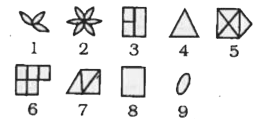 A(a) 1 2 3, 4 8 9, 5 7 6B(b) 4 5 7, 3 1 2, 7 8 9C(c) 1 3 7, 8 9 4, 2 5 6D(d) 3 5 6, 8 7 4, 9 1 2
A(a) 1 2 3, 4 8 9, 5 7 6B(b) 4 5 7, 3 1 2, 7 8 9C(c) 1 3 7, 8 9 4, 2 5 6D(d) 3 5 6, 8 7 4, 9 1 2You are given three equal resistors. How many resistances can be obtained by joining them in series and parallel grouping ?
A2B3C4D6
Group the given figures into three classes on the basis of their identical properties using each figure only once.

View SolutionA series of figures is given which can be grouped into classes . Select the group into which the figures can be classified from the given responses.
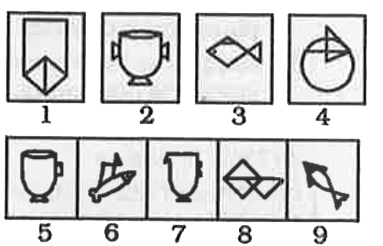
View SolutionA series of figures is given which can be grouped into classes . Select the group into which the figures can be classified from the given responses.

View SolutionA series of figures is given which can be grouped into classes. Select the group into which the figures can be classified from the given responses.
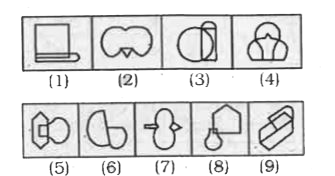
View SolutionA series of figures is given which can be grouped into classes. Select the group into which the figures can be classified from the given responses.

View Solution

